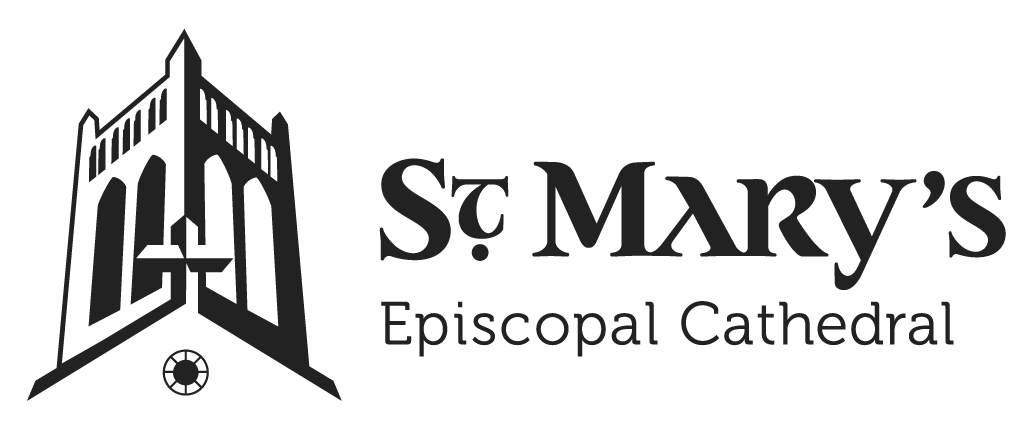
Artifacts
Bishop Otey’s Paten
Through Bishop Otey's Paten, we share with you one of the many historical religious artifacts that St. Mary's possesses.
Otey was Bishop of Tennessee, if not all Tennesseans, from 1833 until his death in Memphis in 1863. He exercised jurisdiction over the state of Tennessee and also provided pastoral oversight to Episcopalians in Alabama, Arkansas, Florida, the Indian Territory (Oklahoma), Kentucky, Louisiana, Mississippi and Texas at various times during his episcopate. Bishop Otey was instrumental in the founding of St. Mary’s and served the congregation for many years.
The Chalice
The paten was given with an accompanying chalice in his honor upon his death by his parishioners to memorialize his dedication to St. Mary’s.
The inscription on St. Mary's Paten reads as follows:
IN MEMORIAM
James Hervey Otey
"First Bishop of the Catholic Church in Tennessee"
THE HUMBLE OFFERING OF HIS BEREAVED FLOCK OF
Saint Mary's Church
MEMPHIS, TENNESSEE
"FEED MY SHEEP. FEED MY LAMBS"

The High Altar: Dedication to Constance and her Companions
Memphis suffered periodic epidemics of yellow fever, a mosquito-borne viral infection, throughout the 19th century. The worst of the epidemics occurred in the summer of 1878, when 5,150 Memphians died from the disease. Five years earlier, a group of Episcopal nuns from the recently formed Sisterhood of St. Mary arrived in Memphis to operate the St. Mary's School for Girls, which was relocated to the Cathedral site. When the 1878 epidemic struck, a number of priests and nuns, both Protestant and Catholic, doctors, and even the proprietress of a bordello, stayed behind to tend to the sick and dying. The Episcopal nuns' superior, Sister Constance, three other Episcopal nuns, and two Episcopal priests are known throughout the Anglican Communion as "Constance and Her Companions" or the "Martyrs of Memphis". Added to the Episcopal Church's Lesser Feasts and Fasts in 1981, their feast day (September 9) commemorates their sacrifices.
Sister Constance (neé Caroline Louise Darling, b. Medway, Mass., 1846), superior of the work at Memphis, headmistress of St. Mary’s School for Girls.
Sister Thecla, sacristan of St. Mary’s Cathedral and its school chapel, instructor in music and grammar (English and Latin)
Sister Ruth, nurse at Trinity Infirmary, New York
Sister Frances, a newly professed nun given charge of the Church Home orphanage
The Rev. Charles Carroll Parsons, rector of Grace Episcopal Church, Memphis; former U.S. Army artillery commander, West Point alumnus and professor (Served with classmate Lt. Col. George Armstrong Custer in Kansas, defense counsel in Custer's 1867 court-martial trial.)
The Rev. Louis S. Schuyler, newly ordained assistant rector at Parsons' prior parish, Holy Innocents Episcopal Church, Hoboken, New Jersey.
The high altar of the Cathedral, consecrated on Whitsunday 1879, was commissioned by Bishop Quintard to memorialize the Sisters of St. Mary who died. Inscribed on the altar steps are "Alleluia Osanna," Constance's last words. Sister Hughetta (Snowden) survived the plague, and when she died in 1926, her name was added to the steps, replacing the verse, "He feedeth among the lilies." The reredos (altar backdrop) is also a memorial to Sister Hughetta.

The Glastonbury Stone & The Pool of Bethesda Stone
There are two ancient stones set in the walls of the transept of the Cathedral, both of which were brought back by Bishop Gailor from trips abroad to the Holy Land and England. The first is the Glastonbury Stone from the ancient Abbey of Glastonbury, where it is said that Joseph of Arimathea preached the first Christian sermon in England. The Pool of Bethesda stone originated from the Balustrade that surrounded the pool where Jesus performed healing miracles. It was uncovered by archeologists in the early 20th Century.
The Stone from the Pool of Bethesda
The Glastonbury Stone






